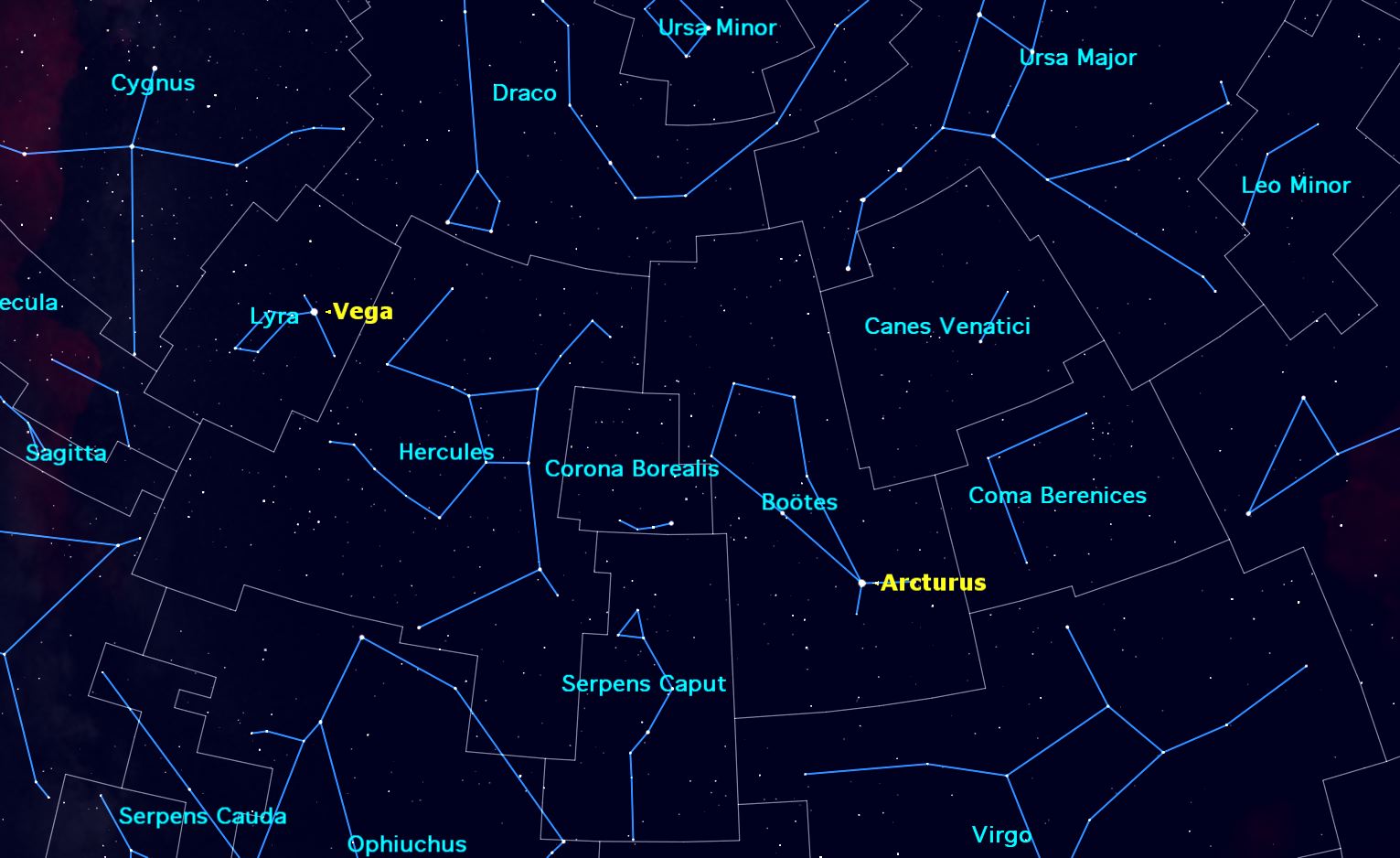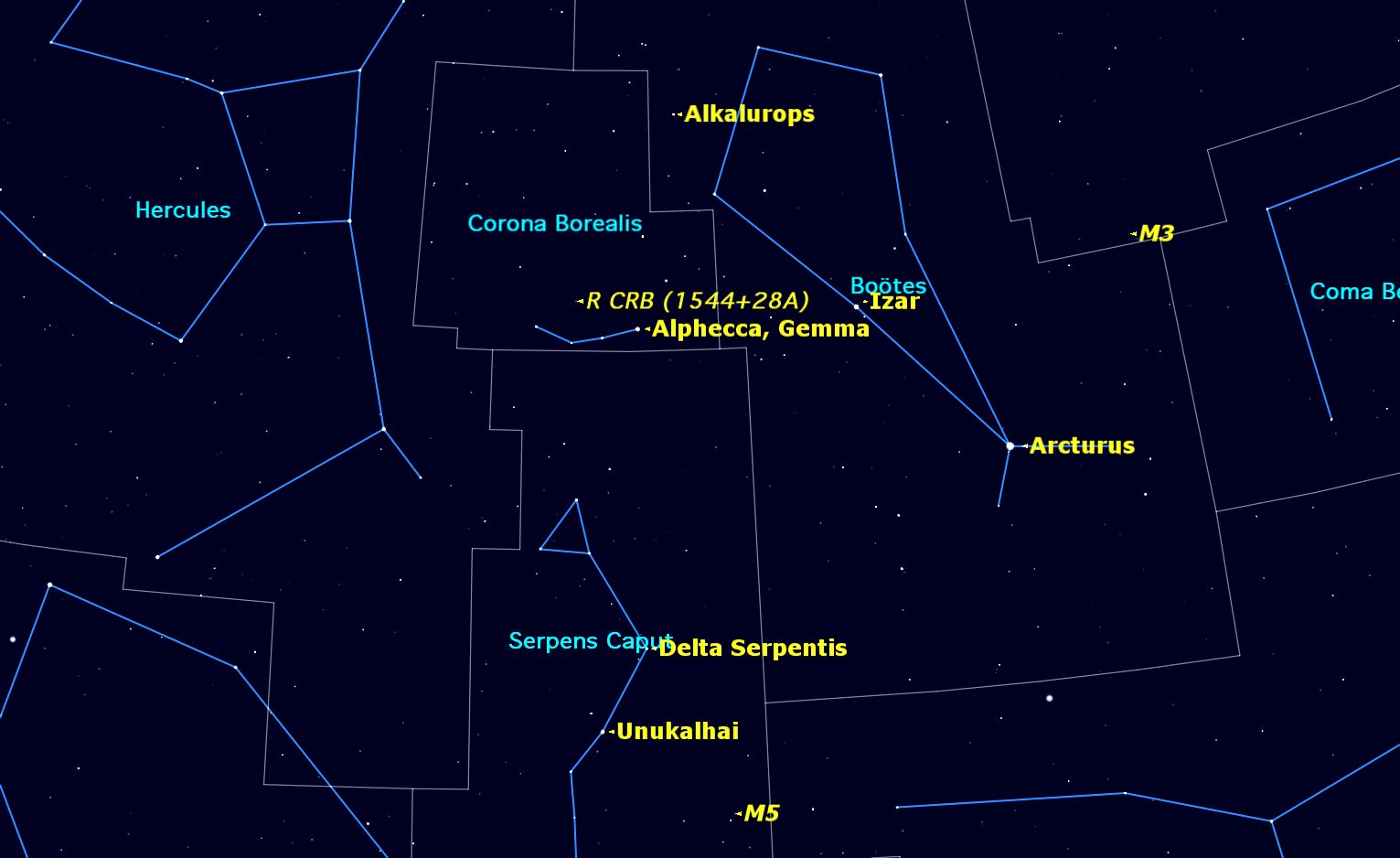Want to Go Stargazing? Know the Stars of Early Summer

Early summer is an "in-between" time in the skies. The realm of the galaxies has moved off to the west, but the summer Milky Way has not yet arrived. This is the best time of year to observe globular clusters and double stars.
The centerpiece of the early summer constellations is Boötes, the herdsman, with the bright star Arcturus at his heart. Arcturus is easy to find by following the "arc" of the Big Dipper's handle away from the ladle: it is the only bright star in this part of the sky. Alternately, if you live in the Northern Hemisphere, simply look straight overhead around 11 p.m. your local time.
Although Boötes looks like it might be pronounced like "booties," the diaeresis (double dot) over the second "o" gives you a clue: the two "o"s are pronounced separately: Boh-OO-tes. Its stars form a distinctive kite shape, complete with tail. [The Brightest Stars in the Night Sky]
Arcturus is the third brightest star in the night sky, after Sirius and Canopus. It is relatively close to us, only 37 light-years distant. It is an orange giant star, slightly cooler than the sun, but quite a bit larger in diameter.
Boötes contains relatively few deep sky objects, but is rich in double and variable stars. Izar (Epsilon Boötis) is one of the finest double stars in the sky. With a separation of only 2.9 arc seconds, it requires at least 3 inches aperture, steady skies, and high magnification to see its duality; its stars are gold and greenish in colour. Alkalurops (Mu Boötis) is a much wider double at 2 arc minutes separation, but it is a challenge to see that one of its stars is itself a double.
Although not within Boötes itself, most amateur astronomers use the stars of Boötes to star-hop to the Messier globular cluster Messier 3 in the dim constellation of Canes Venatici. M3 forms an almost perfect equilateral triangle with Arcturus and Rho Boötis. This is one of the finest globular clusters in the sky.
Just to the left (east) of Boötes is a small circlet of stars forming Corona Borealis, the northern crown. Look within the circle to see if you can see R Corona Borealis, a very unusual variable star. Some have called this an "inverse nova." Most of the time, it shines steadily with a brightness of about magnitude 7, just below naked eye visibility, but easily seen in binoculars. At long and irregular intervals, instead of brightening like a nova, it dims by about 6 magnitudes. This dimming is caused by occasional expulsion of a dark obscuring cloud of dust. Currently R is entering its dark phase, but keep watching, and it should soon reappear.
Breaking space news, the latest updates on rocket launches, skywatching events and more!
Below Corona Borealis is one of the most unusual constellations, or rather "half constellations." Serpens represents a snake cut in half, each half held in one hand of Ophiuchus. This is the front half: Serpens Caput, or the head of the serpent. The other half, located quite a ways to the east, is Serpens Cauda, the tail of the Serpent. A triangle is supposed to represent the head of the spent, but I always see this and the two stars above as a large "X."
The brightest star in Serpens bears the ugly name Unukalhai, which is Arabic for "the serpent’s neck." Just above Unukalhai is Delta Serpentis, a fine pair of pale yellow stars in a telescope.
But the real prize in Serpens Caput is the globular cluster Messier 5, every bit as fine as Messier 3 to the northwest. Like all globular clusters, M5 responds well to aperture and magnification. Besides resolving the cluster into myriads of tiny stars, a large telescope will reveal chains of stars and clusters within the cluster.
This article was provided to SPACE.com by Simulation Curriculum, the leader in space science curriculum solutions and the makers of Starry Night and SkySafari. Follow Starry Night on Twitter @StarryNightEdu. Follow us @Spacedotcom, Facebookand Google+. Original article on Space.com.

Geoff Gaherty was Space.com's Night Sky columnist and in partnership with Starry Night software and a dedicated amateur astronomer who sought to share the wonders of the night sky with the world. Based in Canada, Geoff studied mathematics and physics at McGill University and earned a Ph.D. in anthropology from the University of Toronto, all while pursuing a passion for the night sky and serving as an astronomy communicator. He credited a partial solar eclipse observed in 1946 (at age 5) and his 1957 sighting of the Comet Arend-Roland as a teenager for sparking his interest in amateur astronomy. In 2008, Geoff won the Chant Medal from the Royal Astronomical Society of Canada, an award given to a Canadian amateur astronomer in recognition of their lifetime achievements. Sadly, Geoff passed away July 7, 2016 due to complications from a kidney transplant, but his legacy continues at Starry Night.



